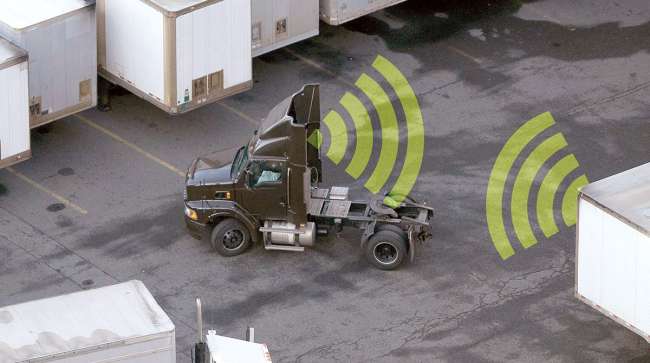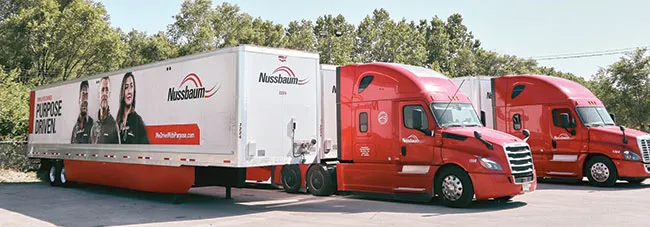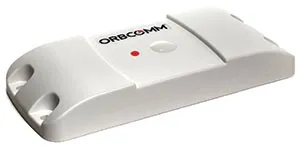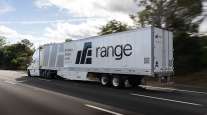Technology Helps Minimize Tractor-Trailer Pairing Errors

[Stay on top of transportation news: Get TTNews in your inbox.]
Searching a lot for the right trailer and driving away with the wrong one can set off a chain reaction of events, each exacting a cost.
Technology designed to help prevent that mistake is in use by some carriers, while some telematics vendors are developing tractor-trailer pairing capability to add to their systems.
Nussbaum Transportation, a carrier in Hudson, Ill., with 550 tractors and approximately 1,300 trailers, started using technology to support tractor-trailer pairing more than three years ago. The capability is provided as part of the Phillips Connect system.
Before that, locating the correct trailer was often a time-consuming challenge, said Tony Morthland, Nussbaum’s director of maintenance, noting that some lots measure many acres and contain large numbers of trailers. “It could be 15 minutes to 45 minutes, depending on what size lot it is, to find what they need,” he said.

Nussbaum Transportation started using technology to support tractor-trailer pairing more than three years ago as part of the Phillips Connect system. (Nussbaum Transportation via Facebook)
Nussbaum Transportation maintains drop lots at various locations across the country, and keeps storage trailers on the lots of some of its customers, noted James Grier, Nussbaum’s director of fleet service. Before the carrier implemented the matching capability, Grier said, it wasn’t uncommon for drivers to call from a lot because they couldn’t find a trailer. “It might be backed into a dock getting loaded or unloaded,” he explained.
Now, from their tablet device, drivers are able to locate a trailer and know if it’s up to a dock or, for instance, if it’s the second or third trailer in a line. “We can save countless hours in a given week [because] drivers are not having to hunt for a specific trailer,” Grier said.

Grier
The driver’s screen display shows the unit number of the trailer, and whether it is loaded or unloaded, he added. “It’ll also let them know if the DOT is up to date or not,” Grier continued. “So that they don’t accidentally hook to an expired DOT trailer that we’re working on getting through service.”
Hours-of-service regulations prompted more carriers to go into intermodal and drop-and-hook operations to maximize drivers’ time, according to Chris Corlee, director of product management for Orbcomm, and that has heightened the imperative of matching tractors and trailers correctly. He noted that this has become a growing issue among carriers for the last seven to 10 years.
Tractor-trailer ratios, typically more than one trailer per tractor, shifted to still more trailers per tractor, Corlee said. Carriers that emphasized intermodal and drop-and-hook operations figured they were relieving drivers of loading and unloading periods, maximizing “turn time,” he explained. “But you also introduce the human error risk,” he said adding that a driver will take a different trailer than they’re scheduled to.
“Maybe he’s supposed to go pick up trailer 128761,” Corlee said. “He picks up trailer 128716. It’s as simple as that. You just transpose two digits — you end up grabbing the wrong trailer.”
After that, a series of complications and costs mount up.
“The driver doesn’t realize he’s got the wrong trailer till he opens the seal and backs [up] to the dock door,” hours or a day later, he continued. Tasks required to rectify the mistake include hauling the correct trailer to the receiver, and returning the wrong trailer to the yard where the driver picked it up. “And now you’ve got a broken seal issue on top of that,” Corlee said. Another cost, he noted, is unpaid mileage.

Orbcomm’s line of devices helps tractors pair with trailers via sensor broadcasting. (Orbcomm)
Corlee said Orbcomm’s system uses a low-energy Bluetooth device or “beacon” on the back of tractors, which syncs with another Orbcomm device on the trailer
“Whenever the truck beacon backs up in front of a trailer, it’s actually broadcasting, and then our trailer device picks up that broadcast signal and makes that match [via Bluetooth],” he explained. The truck and trailer numbers are transmitted to the vendor’s telematics unit, also mounted on the trailer. The data — tractor and trailer number — on the vendor’s platform confirms the identities of the truck and the trailer that are paired.
Corlee specified that the information does not indicate whether the pairing is correct. Orbcomm’s integrations with transportation management systems, such as McLeod, enable a carrier to determine whether the pairing is correct, using dispatch’s record for the trailer, the dispatched tractor and the load number, he said.
Among other telematics vendors that said they were developing functionality to support correct tractor-trailer pairing is Clarience Technologies. Paul Sniegocki, chief technical officer, said the company field tested a product it’s calling the virtual tether on its own fleet, which operates among the company’s manufacturing locations. The company is aiming to conduct field tests with fleets this year, Sniegocki said.
The product is designed to confirm a pairing when a driver connects the tractor to a trailer via the J560 7-pin plug.
When a dispatcher creates an order for a certain tractor to pick up a certain trailer, the identification numbers for each are sent wirelessly to a Road Ready telematics device mounted on the trailer. If the device on the trailer records the wrong ID from a Road Ready device attached to the tractor, the telematics is designed to notify the driver and/or back office.
Vendors said that in their development efforts, they are taking into account an ongoing project by the Technology & Maintenance Council to develop a successor to what TMC Executive Director Robert Braswell called “the venerable J560 7-pin connector.” A task force is examining “as many as eight possible successors,” Braswell said in an email message. The candidates were presented at a recent meeting of the council, which has scheduled webinars to go over the details of each proposal, Braswell said.
“I think it’s well overdue,” Nussbaum’s Morthland said. “With all the electronics coming now we need to have something different besides just the seven-pin connector. The trailers are getting smarter now and we need ways to make the data travel back to the truck.”
Want more news? Listen to today's daily briefing above or go here for more info
In the meantime, Phillips Connect recently introduced what it calls a tractor-trailer pair, or T/T pair. A tractor-trailer pairing device, it is “a regular QCS” socket, “but it has a chip set” that broadcasts a unique identifier over the 7-way J560 plug, visible to a PLC receiver on a tractor or trailer, said Daniel Forthoffer, corporate director of research and development. Forthoffer is also a leader of the project within TMC to come up with a successor connector. Forthoffer said the T/T pair begins transmitting instantly after the J560 is plugged into a trailer.
Jim Epler, Phillips’ executive vice president of market development, said that fleets can put a QCS socket on their tractors and begin tractor-trailer pairing whether or not they are Phillips Connect users. “This doesn’t have to have the Phillips Connect gateway” to work, he said.




